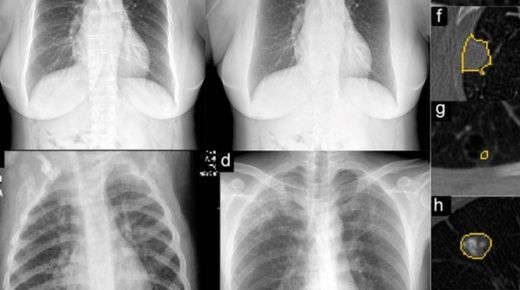Lung diseases can be life-altering. Finding them early can make all the difference. Diagnostic imaging plays a key role. It helps in spotting lung problems at the start. From X-rays to CT scans, these tools offer a clear view of our bodies. As technology advances, these images become sharper and more detailed. Alongside methods like genetic counseling colorado residents may find valuable, diagnostic imaging offers a path to better health outcomes. Understanding these techniques can guide us in making informed choices.
The Power of X-rays
X-rays are often the first step in diagnosing lung issues. They can reveal signs of pneumonia, collapsed lungs, or even tumors. These images are quick and painless. Despite being an older technology, X-rays still serve a crucial purpose. For example, doctors use X-rays to spot any immediate concerns that need further investigation.
CT Scans: A Deeper Look
CT scans take imaging a step further. They provide a more detailed view of the lungs. These scans combine multiple X-ray images to create a comprehensive picture. This helps doctors identify smaller nodules or tumors that a standard X-ray might miss. The precision of CT scans supports early detection and treatment planning.
Comparing Diagnostic Tools
Each imaging tool has its strengths. Here’s a simple comparison:
| Imaging Tool | Strengths | Limitations |
| X-rays | Quick, non-invasive, and accessible | Less detailed, potential radiation exposure |
| CT Scans | Detailed, detects small changes | Higher radiation exposure, costlier |
MRIs and Ultrasounds
While less common for lung issues, MRIs and ultrasounds have their uses. MRIs offer excellent detail without radiation. They are useful in complex cases or when CT scans are inconclusive. Ultrasounds, though more limited, can assist in certain procedures like guiding biopsy needles.
The Role of PET Scans
PET scans are often used in cancer cases. They help in staging lung cancer and assessing how well it responds to treatment. By showing how organs and tissues function, PET scans provide insights that other imaging tools cannot. This makes them invaluable in comprehensive care plans.
Choosing the Right Imaging
The right imaging choice depends on the situation. Doctors consider symptoms, medical history, and other tests. Each method has its place in a comprehensive diagnostic strategy. It’s important to trust medical professionals to choose the best approach for each case.
Staying Informed and Safe
Understanding the benefits and risks of each imaging tool helps in making informed decisions. Always discuss any concerns with your healthcare provider. They can explain the necessity of each scan and how it contributes to your care. The Radiology Information Safety page offers useful guidance on safety in medical imaging.
Conclusion
Diagnostic imaging is a cornerstone in the detection and management of lung diseases. It offers a window into the body, helping to catch issues early. With advances in technology, these tools continue to improve, providing clearer images and better outcomes. Together with other diagnostic methods, imaging plays a vital role in safeguarding lung health.
Stay informed and proactive about your health. Collaborate with your healthcare team to explore the best imaging options for your needs. This approach ensures a path toward better health and peace of mind.




